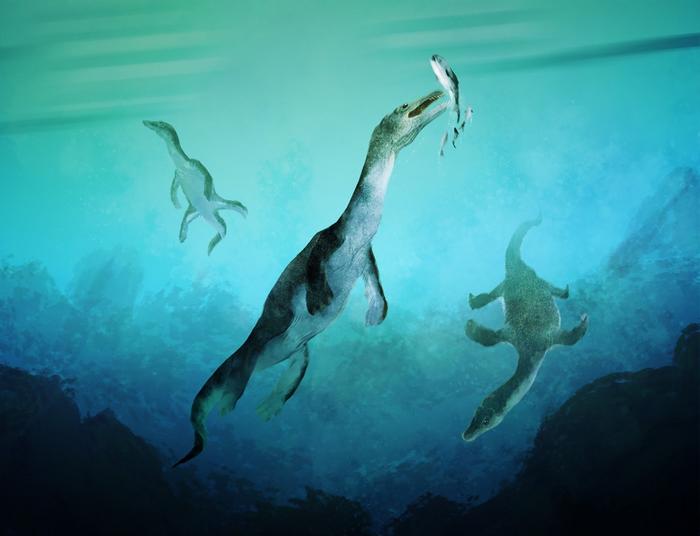Scientists have discovered the oldest fossil of a sea-going reptile in the Southern Hemisphere, a 246-million-year-old nothosaur vertebra found on New Zealand’s South Island. This groundbreaking find sheds new light on the evolution and global spread of these ancient marine reptiles during the dawn of the Age of Dinosaurs.
Reptiles Invaded the Seas After Mass Extinction
The discovery of the nothosaur vertebra in New Zealand is significant because it represents the only evidence of early sea reptiles from the Southern Hemisphere. Reptiles first invaded the seas following a catastrophic mass extinction nearly 252 million years ago, which devastated marine ecosystems and paved the way for the Age of Dinosaurs. Until now, evidence of this evolutionary milestone had only been found in a few locations in the Northern Hemisphere, including Spitsbergen, North America, and China.
Nothosaurs: Distant Predecessors of Plesiosaurs
Nothosaurs were a group of sauropterygians, the most diverse and longest-surviving group of marine reptiles, with an evolutionary history spanning over 180 million years. They were distant predecessors of the long-necked plesiosaurs, which resembled the popular image of the Loch Ness Monster. Nothosaurs could grow up to seven meters long and swam using four paddle-like limbs, catching fish and squid with their flattened skulls and slender conical teeth.
The New Zealand nothosaur vertebra was initially discovered during a geological survey in 1978, but its importance was not fully recognized until an international team of paleontologists from Sweden, Norway, New Zealand, Australia, and East Timor collaborated to examine and analyze the fossil and other associated remains.
“The nothosaur found in New Zealand is over 40 million years older than the previously oldest known sauropterygian fossils from the Southern Hemisphere. We show that these ancient sea reptiles lived in a shallow coastal environment teeming with marine creatures within what was then the southern polar circle,” explains Dr. Benjamin Kear from Uppsala University, lead author of the study.
The discovery of the New Zealand nothosaur fossil challenges long-standing hypotheses about the origin, distribution, and timing of when nothosaurs reached distant areas. Using a time-calibrated evolutionary model, the researchers show that nothosaurs originated near the equator and rapidly spread both northwards and southwards as complex marine ecosystems re-established after the mass extinction that marked the beginning of the Age of Dinosaurs.
“The beginning of the Age of Dinosaurs was characterised by extreme global warming, which allowed these marine reptiles to thrive at the South Pole. This also suggests that the ancient polar regions were a likely route for their earliest global migrations, much like the epic trans-oceanic journeys undertaken by whales today. Undoubtedly, there are more fossil remains of long-extinct sea monsters waiting to be discovered in New Zealand and elsewhere in the Southern Hemisphere,” says Kear.
For more information explore the following resources:


